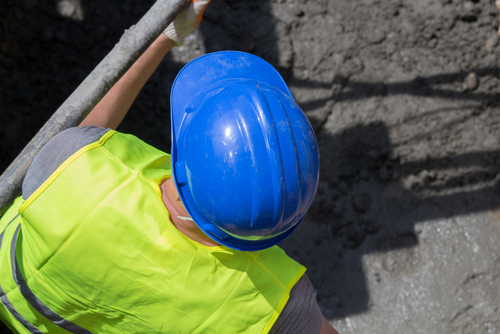Ensuring Safety in Utility Installations: Best Practices and Regulations
April 12, 2024 2:29 pm Leave your thoughtsUtility installation safety measures are essential to prevent accidents, injuries, and property damage during the installation process. Failure to comply with utility installation regulations can result in costly fines and even legal actions. By following the best practices for safe utility installations, contractors can ensure the safety of workers and the public, while also protecting the environment. In this blog, we will discuss the importance of utility installation safety measures, the regulations that must be followed, and the best practices to ensure safe utility installations.
Importance of Utility Installation Safety Measures
Utility installations involve the installation of various underground utilities, such as water pipes, gas lines, electrical cables, and telecommunications infrastructure. These installations can be complex and pose a risk to workers, the public, and the environment if not done properly. Therefore, it is important to implement safety measures to prevent accidents and ensure compliance with utility installation regulations.
One of the main reasons why utility installation safety measures are crucial is to protect workers from injuries and fatalities. According to the Occupational Safety and Health Administration (OSHA), the construction industry has one of the highest rates of fatal and non-fatal injuries, with utility installation being one of the most hazardous jobs within the industry. By implementing safety measures, such as providing proper training, PPE, and safety equipment, contractors can reduce the risk of accidents and injuries on the job site.
In addition to protecting workers, utility installation safety measures are also important to prevent damage to property and the environment. Accidental strikes on underground utilities can cause disruptions to essential services, such as water, gas, and electricity, leading to costly repairs and inconvenience for residents and businesses. Moreover, leaks or spills from utility installations can contaminate soil and water sources, posing a threat to public health and the environment. By following safety measures and best practices, contractors can minimize these risks and prevent accidents and environmental damage.
Compliance with Utility Installation Regulations
In order to ensure the safety of utility installations, contractors must comply with a set of regulations and standards aimed at protecting workers, the public, and the environment. These regulations are enforced by government agencies, such as OSHA, the Department of Transportation (DOT), and the Environmental Protection Agency (EPA), and vary depending on the type of utility being installed and the location of the project.
For example, OSHA’s Construction Standards for excavation and trenching must be followed when installing underground utilities to prevent cave-ins and other hazards. The DOT’s Pipeline and Hazardous Materials Safety Administration (PHMSA) regulates the transportation of hazardous materials, including natural gas and petroleum pipelines, to ensure the safety of the public and the environment. The EPA’s Spill Prevention, Control, and Countermeasure (SPCC) regulations require facilities that store oil and other hazardous substances to implement spill prevention measures to protect water sources from contamination.
By complying with utility installation regulations, contractors can avoid costly fines, legal actions, and reputational damage, while also ensuring the safety of workers and the public. It is essential to stay up-to-date with the latest regulations and standards in the utility installation industry to prevent violations and promote a culture of safety on the job site.
Best Practices for Safe Utility Installations
To ensure the safety of utility installations, contractors should follow a set of best practices that address common hazards and risks associated with the installation process. These best practices include:
1. Conducting a thorough site assessment before starting the installation to identify underground utilities, obstacles, and other potential hazards that could impact the project.
2. Providing proper training to workers on safe work practices, equipment operation, and emergency procedures to prevent accidents and injuries on the job site.
3. Using the right equipment and tools for the job, such as trench boxes, shoring systems, and utility locators, to ensure the safety of workers and prevent cave-ins and strikes on underground utilities.
4. Implementing a traffic control plan to protect workers and the public from vehicle-related accidents and ensure a safe work environment on the road.
5. Establishing a confined space entry program for workers who need to enter confined spaces, such as manholes and vaults, to prevent accidents and ensure compliance with OSHA regulations.
6. Conducting regular inspections and maintenance of equipment, vehicles, and utilities to identify potential hazards and prevent accidents before they occur.
By following these best practices, contractors can ensure the safety of utility installations and protect workers, the public, and the environment from accidents and damage. It is important to promote a culture of safety within the organization, encourage open communication between workers, and provide ongoing training and support to maintain a safe work environment.
Summary
Utility installation safety measures are essential to prevent accidents, injuries, and damage during the installation process. By complying with utility installation regulations and following best practices for safe installations, contractors can ensure the safety of workers and the public, protect the environment, and avoid costly fines and legal actions. It is important to stay up-to-date with the latest regulations and standards, provide proper training and equipment to workers, and promote a culture of safety to prevent accidents and create a safe work environment for all.
Need Utility Services in Roseville, CA?
Locally owned and operated since 2000, we strive to provide fast, friendly, and efficient service to the residents of Roseville and its surrounding areas. Using an open trench method for installation, we work with communication and utility companies to get electric, water, and gas services up and running in your home or business as quickly and carefully as possible. Es7 Comm-2 U, Inc is proud to carry an ‘A+’ rating with the Better Business Bureau as a fully licensed general contractor. Call us today to ensure that your next installation project is handled with the care and professionalism that it deserves.
Categorised in: Utility Services
This post was written by admin

